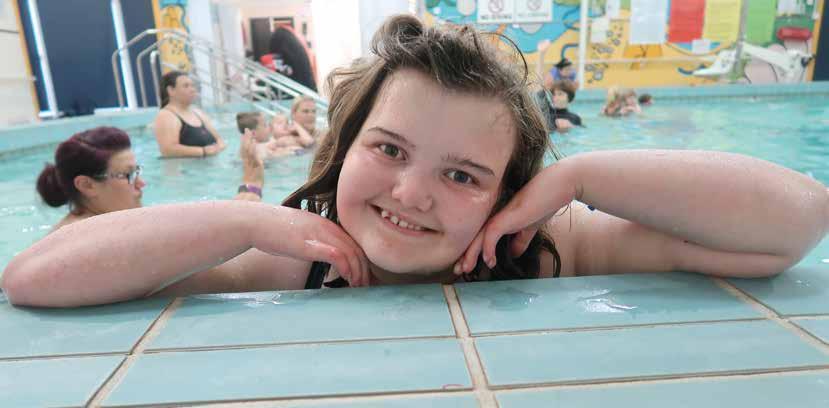THE HALLIWICK CONCEPT:
TEACHING CHILDREN WITH DISABILITIES TO SWIM FOR OVER 50 YEARS PEOPLE WITH DISABILITIES HAVE BENEFITED FROM WATER ACTIVITIES USING THE HALLIWICK CONCEPT
H
alliwick was developed by James McMillan, known as Mac, with his wife Phyl. Their aim was teaching swimming to children with disabilities, who attended the Halliwick School in London. From simple beginnings the Halliwick method has become a worldwide phenomenon. Mac and the instructors in the first Halliwick club, ‘Halliwick Penguins’, in North London were swimming teachers. Halliwick was developed by, and for, nonmedical people. The Halliwick concept has developed and progressed over the years but continues to be based on Mac and Phyl’s original ideas described here. Mainstream swimming teaching has developed in the wake of the Halliwick concept so that Halliwick sessions may not seem dissimilar from mainstream swimming lessons. However, the following outline of both the philosophy of the Halliwick concept and the Ten Point Programme give a flavour of what the Halliwick concept is about.
THE PHILOSOPHY OF THE HALLIWICK CONCEPT
Positive thinking Participants in Halliwick sessions are called ‘swimmers’, the focus is on their ability in the water and their disabilities are often considered inconsequential.
28
Water Happiness The emphasis is on water happiness and enjoyable pool sessions with an aim towards maximum benefit for participants. Instructors are in the water, with a one to one relationship with swimmers, supporting swimmers according to need and encouraging confidence and independence. Enjoyment is enhanced through games, for both younger and older swimmers alike. It has been said, ‘we don’t stop playing because we grow old, we grow old because we stop playing’. New skills learned are incorporated into games and often the most reluctant swimmers enjoy the games the most.









